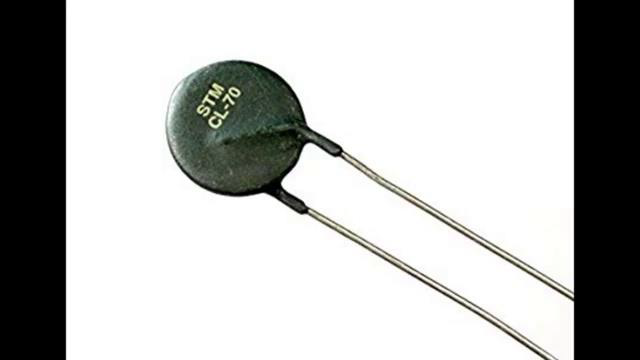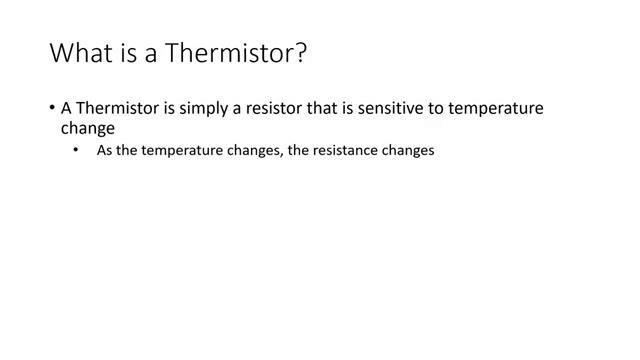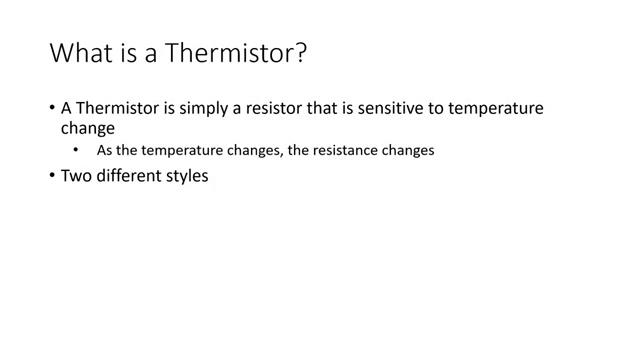What is a Thermistor?
A Thermistor is simply a resistor that is sensitive to temperature change.
- As the temperature changes, the resistance changes
Two Different Styles
- NTC (negative temperature coefficient)
- As temp. increases, resistance will drop
- PTC (positive temperature coefficient)
- As temp. increases, the resistance will also increase
NTC Thermistors are More Commonly Used for Temperature Measurement
Thermistor Advantages and Disadvantages
Advantages
- Less expensive
- Can measure change in temperature much faster
- Provide higher resolution (better accuracy) within the range they can measure
Disadvantages
- Limited temperature range in which they measure
- Max is 350 Celsius
- Resistance to temperature correlation is non-linear
- Can "self heat" causing inaccurate temperature readings
Transcript
[0m:4s] Hi I'm Josh Bloom, welcome to another video in the RSP Supply education series. If you find that these videos are helpful to you, it certainly helps us out if you could give us a big thumbs up and subscribe to our channel.
[0m:16s] In today's video, we are going to be talking again about devices that are commonly used to measure temperature.
[0m:23s] More specifically we're going to be talking about
[0m:27s] Thermistors, which are simply thermally sensitive resistors. Much like RTDs, thermistors rely on the change in electrical resistance to measure temperature.


[0m:41s] If you have not already seen our other video in which we talk about RTDs we will link that in the description below.
[0m:48s] Although there are quite a few similarities between RTDs and thermistors, there are several differences that make them a good alternative in some situations. In this video, we will discuss how thermistors work, in what ways they differ from RTDs, and also in what applications does it make sense to use them?
[1m:10s] As mentioned before, a thermistor is simply a resistor that is sensitive to temperature change.
[1m:17s] The materials that make them up can vary depending on the thermistor that is being used.
[1m:25s] With that said, they all function in similar ways.
[1m:29s] As the temperature changes, the resistance changes.
[1m:34s] The resistance of a specific thermistor will equal a certain temperature based off of the scaling for that device.
[1m:43s] There are two different styles of thermistor that can be used.

[1m:48s] First is the NTC or negative temperature coefficient,
[1m:54s] and the PTC or positive temperature coefficient.
[1m:59s] It is the NTC thermistor that is commonly used to measure temperature.

[2m:5s] NTC Thermistors resistance will drop
[2m:10s] with the increase in temperature, while the PTC thermistor will see increased resistance when the temperature increases.
[2m:19s] The measurement element on the thermistor is typically coated in either glass or epoxy depending on the temperature range that is being measured.
[2m:30s] So what are the differences and some of the advantages and disadvantages to using a thermistor in comparison to an RTD, which is a very similar device.
[2m:41s] Let's start with some of the advantages. First thermistors are quite a bit more inexpensive than RTDs, making them a very attractive option.
[2m:53s] Also, because of their very small size they can measure temperature changes quite a bit faster than an RTD.
[3m:2s] They also can provide much more resolution or better accuracy within the range that they are rated to measure.
[3m:11s] However, there are some disadvantages to using this type of measurement device as well. First, they have a much more limited temperature range in which they can read.
[3m:23s] Anything higher than about 350 degrees Celsius would all but eliminate a thermistor as a good option.
[3m:32s] Also,
[3m:34s] the resistance to temperature range is nonlinear, which makes retrieving the measurement data much more difficult.
[3m:44s] Another disadvantage is the fact that thermistors can create heat because of the current flow passing through them.
[3m:52s] Because of this self-heating effect, they can at times cause inaccurate temperature readings.
[4m:0s] As mentioned before RTDs and thermistors are very similar, while still differing in some very important ways. Depending on your situation and budget, a thermistor may be the best option for you.
[4m:15s] So when the conditions are right, thermistors can be a very reliable and accurate way to measure temperature.
[4m:22s] For a full line of temperature measurement devices and thousands of other products, please go to our website. For more information or other educational videos, please go to RSPSupply.com, the Internet's top source for industrial hardware. Also, don't forget: like and subscribe.




